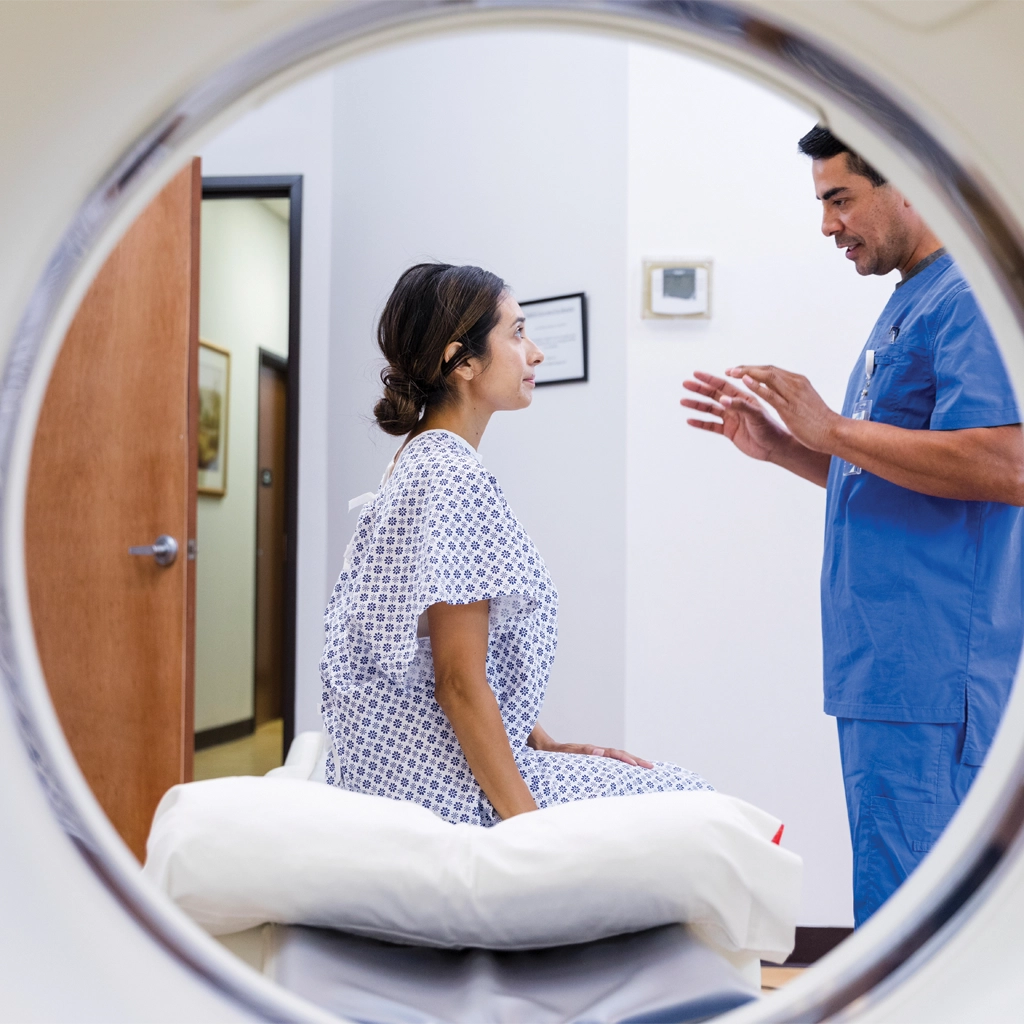What as a CT scan?
CT is a noninvasive medical test that combines special x-ray equipment with sophisticated computers to produce multiple images or pictures of the inside of your body. These cross-sectional images of the area being studied can then be examined on a computer monitor or printed. These images can be manipulated into different positions, allowing the radiologist to thoroughly examine any area of interest within the body.
The technologist begins by positioning you on the CT examination table, usually lying flat on your back or possibly on your side or on your stomach. If contrast material is used it will be injected through an intravenous line (IV). Next, the table will move quickly through the scanner to determine the correct starting position for the scans. Then, the table will move slowly through the machine as the actual CT scan is performed.
What does a CT scan examine?
A CT scan can provide greater clarity and reveal more details than regular x-ray exams. It can be used to study all parts of your body, such as the chest, abdomen, pelvis, or an arm or leg. It can take pictures of body organs, such as the liver, pancreas, intestines, kidneys, bladder, adrenal glands, sinuses, lungs, and heart. It also can study blood vessels, bones, spinal cord and brain.
Preparation for CT
Preparation instructions will be given when the exam is scheduled. Instructions will vary, depending on which part of your body is being scanned. Before entering the CT scanner, you will be allowed to secure all of your valuables in a locker. However, it is recommended that you leave as many valuables at home as possible.
If you are pregnant, or if there is a chance you are pregnant, please inform our technologist before your exam.
Exam Time
The CT scan usually takes 15 to 30 minutes.
Exam Results
After your exam, the radiologist will review your images, and a report will be sent directly to your physician. Reports are available within 24 to 72 hours.


